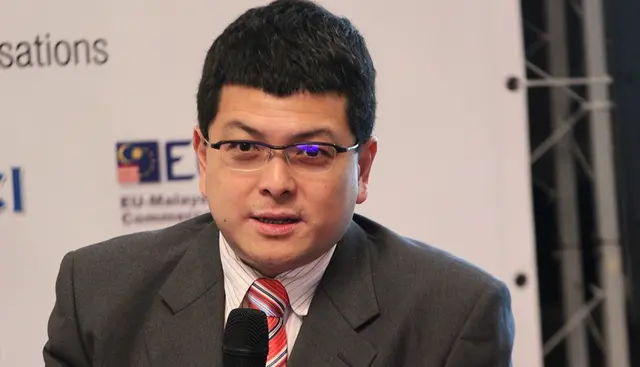By APD writer Hantao and translated by Sun Chenghao
Co-hosted by China Council for the Promotion of International Trade (CCPIT) and the People's Government of Guangdong Province, organized by the People's Government of Guangzhou Municipality, the 2021 China (Guangdong) 21st Century Maritime Silk Road International Expo Theme Forum will be held grandly on September 24. Before the forum, Asia-pacific Daily had an exclusive interview with Hu Yishan, chief consultant of the Asia Pacific Research Centre in Malaysia and senior research fellow at Singapore Institute of International Affairs. Hu elaborated on the implications of the signing of the Regional Comprehensive Economic Partnership (RCEP) on the Belt and Road Initiative (BRI), as well as the development of the Guangdong-Hong Kong-Macao Greater Bay Area under BRI.
RCEP was signed in November 2020, establishing the world's largest free trade area. After eight years of negotiations, China and other Asia-Pacific countries are welcoming a centennial opportunity. Hu said that the signing of RCEP largely symbolizes the integration of the economic markets among the 15 member countries, namely in service and labor markets.
Hu also pointed out that the signing of RCEP would greatly promote BRI. And China has made some achievements on the BRI since its inception in 2013. If RCEP can be properly utilized, the initiative can make even bigger strides.
In particular, BRI advocates “five-connectivities”, namely policy, infrastructure, trade, and financial and people-to-people connectivities. Hu pointed out that in terms of “five-connectivities”, some countries prosper in trade and infrastructure connectivities but lack in policy and financial connectivities, therefore China could focus on these two aspects to develop with the signing of RCEP.
The Belt and Road Initiative is comprised of the Silk Road Economic Belt and the 21st Century Maritime Silk Road. Hu noted that, in Southeast Asian countries, the development of the 21st Century Maritime Silk Road had surpassed that of the Silk Road Economic Belt. In fact, the economic and trade exchanges between Southeast Asian countries and China had already been frequent before BRI’s launch. Among them, Malaysia’s trade volume with China has been one of the largest. And under BRI, the bilateral economic and trade cooperation has been further deepened. This can be demonstrated by the examples of the Malaysia-China Kuantan Industrial Park and the Malaysia-China Qinzhou Industrial Park.
The Belt and Road Initiative, especially the 21st Century Maritime Silk Road, can actively promote the development of the Guangdong-Hong Kong-Macao Greater Bay Area. In this regard, Hu believed that, before looking at the world, it is more important to prioritize the development of the Guangdong-Hong Kong-Macao Greater Bay Area in Southeast Asia-China's "South Gate" to Southeast Asia. At present, the ports in Guangzhou and Shenzhen handle large number of freights, so we could consider transferring some freights overseas, such as to the Philippines and Malaysia, which will promote the development of the whole region in accordance with BRI and facilitate China's overall globalization.
(ASIA PACIFIC DAILY)
 简体中文
简体中文

